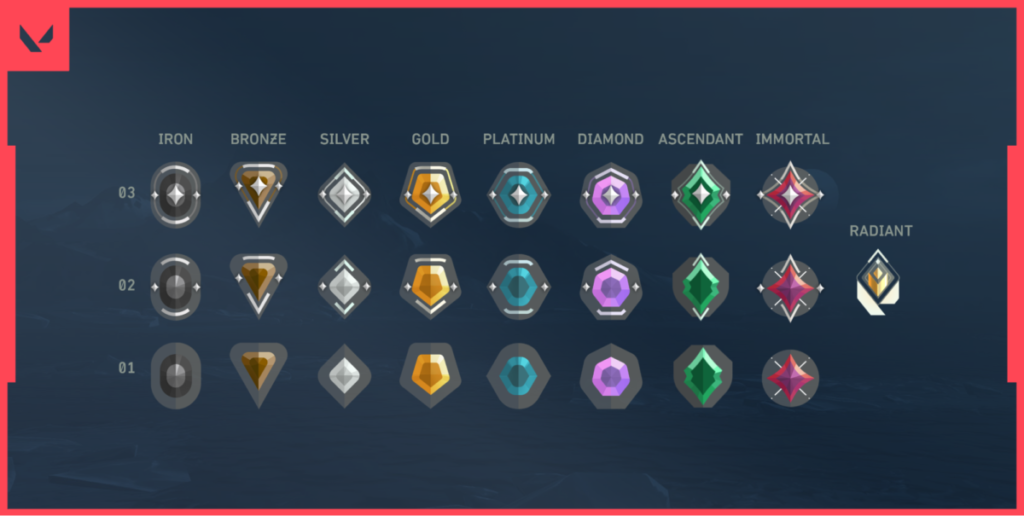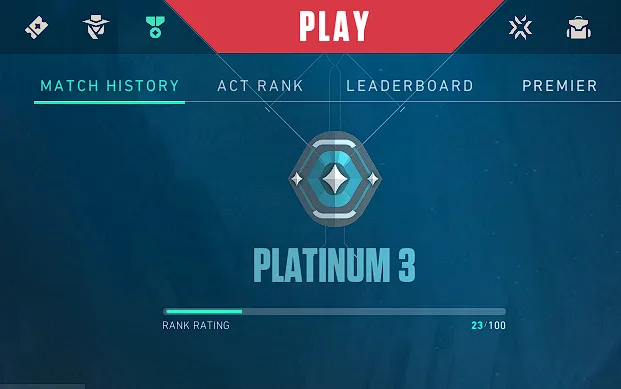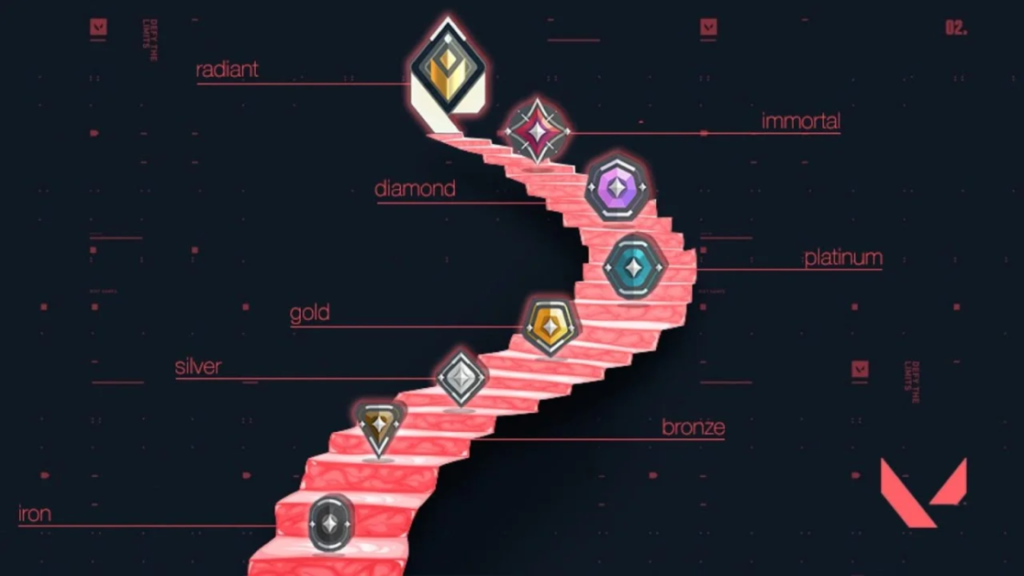Valorant’s Ranking System Explained: From Iron to Radiant
Valorant’s ranking system presents a challenging journey for players, from the lower ranks like Iron and Bronze to the top tier, Radiant. Many players view their Valorant accounts as a reflection of their dedication and progress, making it crucial to understand the ranking system to improve and climb the competitive ladder.
The Valorant Rank Hierarchy

Valorant features nine primary ranks: Iron, Bronze, Silver, Gold, Platinum, Diamond, Ascendant, Immortal, and Radiant. Each rank, except Radiant, is subdivided into three tiers (e.g., Gold 1, Gold 2, Gold 3). This granular structure allows for more precise skill representation and provides players with incremental goals as they improve.
Radiant, the highest rank, is reserved for the top 500 players in each region. This exclusive tier represents the pinnacle of Valorant skill and is highly competitive, with players constantly vying for positions on the leaderboard.
How Ranked Play Works in Valorant?

To participate in ranked matches, players must first reach Account Level 20. This requirement ensures that new players have a basic understanding of the game mechanics before entering the competitive scene.
Once eligible, players can queue for ranked matches through the dedicated Competitive tab in the game’s menu. The ranking system utilizes two key components:
- Rank Rating (RR): This is the visible points system players see after each match. Players gain RR for wins and lose it for defeats.
- Matchmaking Rating (MMR): This hidden rating helps match players of similar skill levels and influences RR gains and losses.
Players need to accumulate 100 RR to advance to the next tier or rank. The amount of RR gained or lost per match varies based on individual performance, team performance, and the relative skill levels of all players in the match.
The Impact of Seasons and Act Ranks
Valorant’s competitive play is divided into Episodes, each consisting of three Acts. At the end of each Act, players receive an Act Rank based on their highest-ranked wins during that period. This system allows players to track their progress over time and provides additional incentives for consistent performance throughout each Act.
While ranks don’t decay over time, they do reset at the beginning of new Episodes, requiring players to complete placement matches to reestablish their position.
Party Restrictions and Competitive Integrity
To maintain fair and balanced matches, Valorant implements party restrictions based on rank disparities. These restrictions vary depending on party size and the ranks of individual players.
For example, a party of two or three players must be within a certain rank range to queue together, while five-player parties can include any mix of ranks but may face RR penalties. These measures help preserve the competitive integrity of the game and ensure that matches are as balanced as possible.
Strategies for Climbing the Ranks
Improving your rank in Valorant requires a combination of mechanical skill, game sense, and teamwork. Consistent practice, warm-up routines, and focusing on a few key agents can significantly impact your performance.
Additionally, playing with a regular group of friends or finding teammates with complementary playstyles can enhance coordination and increase your chances of success. Remember, climbing the ranks is a journey, and maintaining a positive attitude even in the face of setbacks is crucial for long-term improvement.

Robert Griffith is a content and essay writer. He is collaborating with local magazines and newspapers. Robert is interested in topics such as marketing and history.






